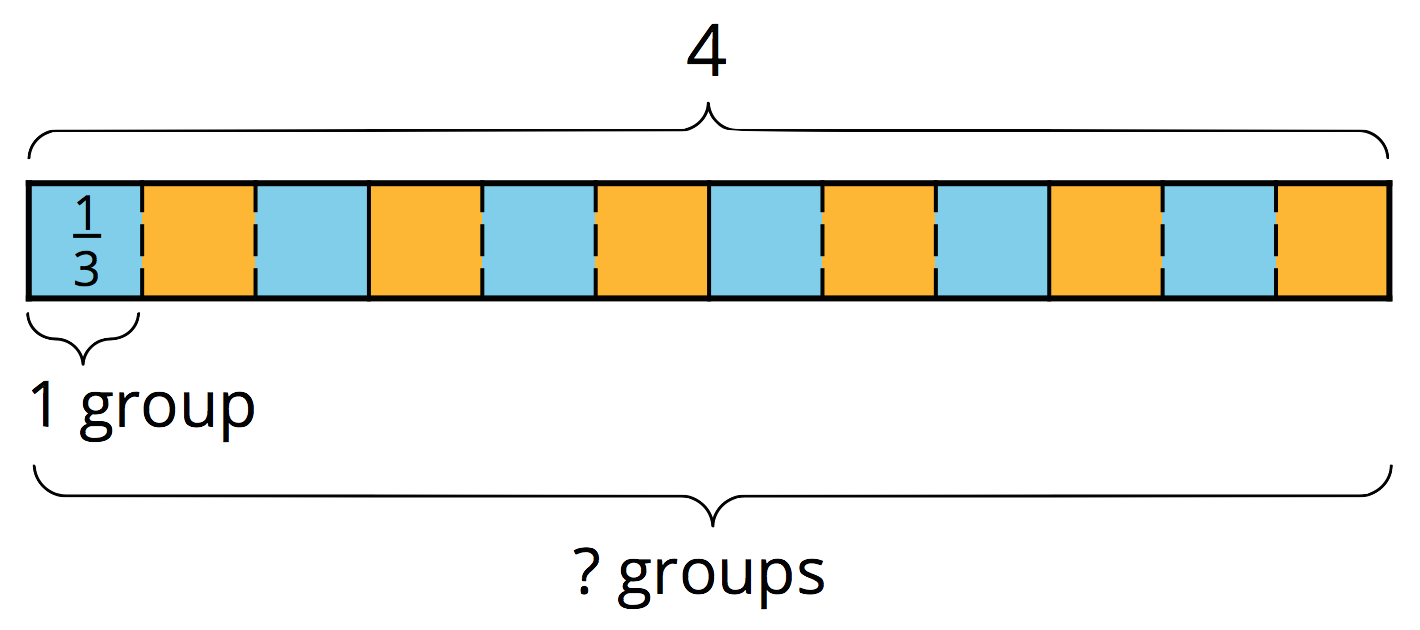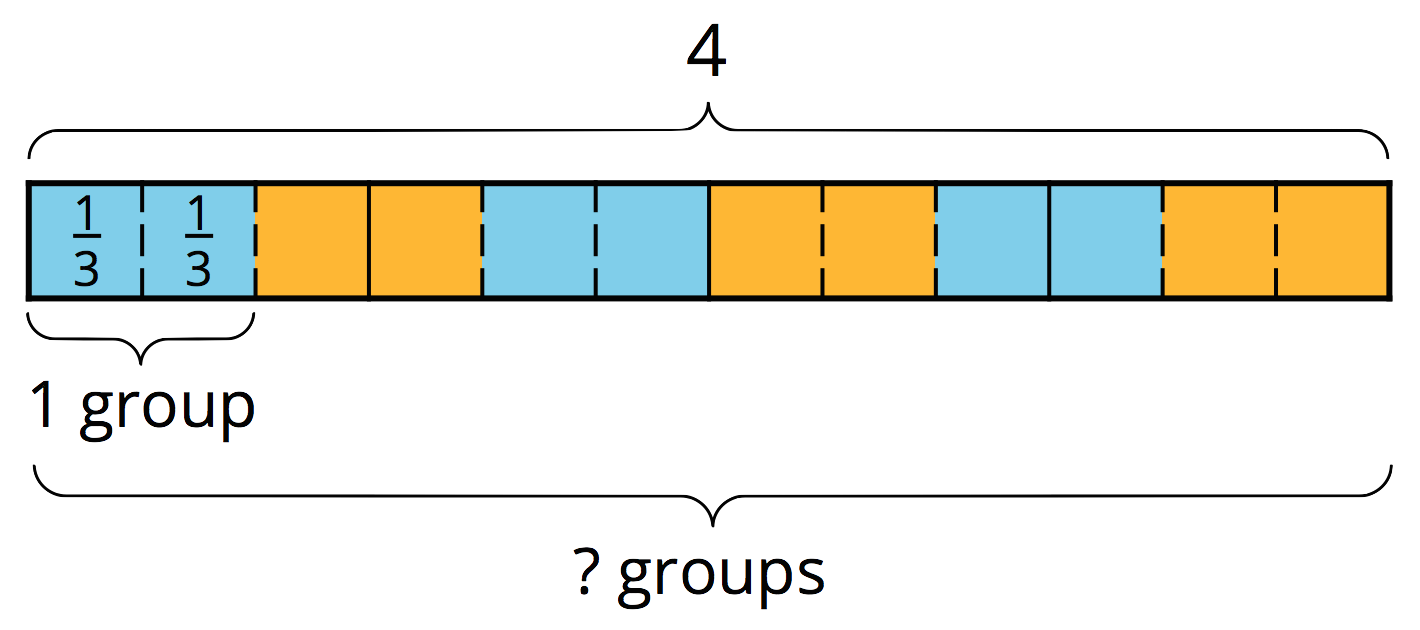10.1: Dividing by a Whole Number
Work with a partner. One person should solve the problems labeled “Partner A,” and the other should solve those labeled “Partner B.” Write an equation for each question. If you get stuck, draw a diagram.
-
Partner A
-
How many 3s are in 12?
Division equation:

-
How many 4s are in 12?
Division equation:

-
How many 6s are in 12?
Division equation:

-
-
Partner B
-
What is 12 groups of \frac 13?
Multiplication equation:

-
What is 12 groups of \frac 14?
Multiplication equation:

-
What is 12 groups of \frac 16?
Multiplication equation:

-
-
What do you notice in the diagrams and equations? Discuss with your partner.
-
Complete this sentence based on your observations: Dividing by a whole number a produces the same result as multiplying by _____________ .







